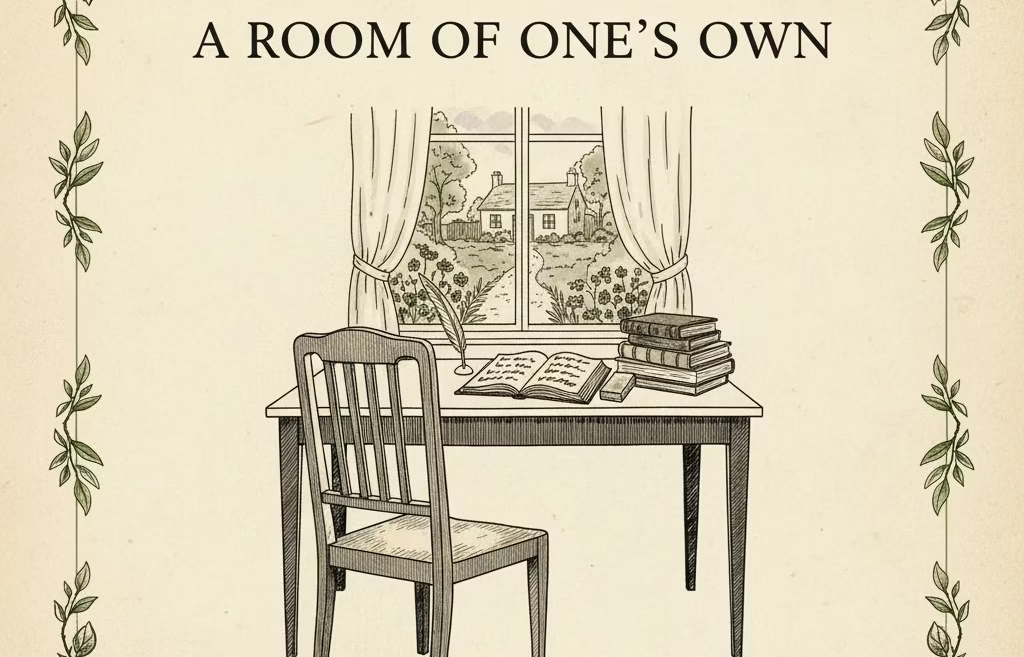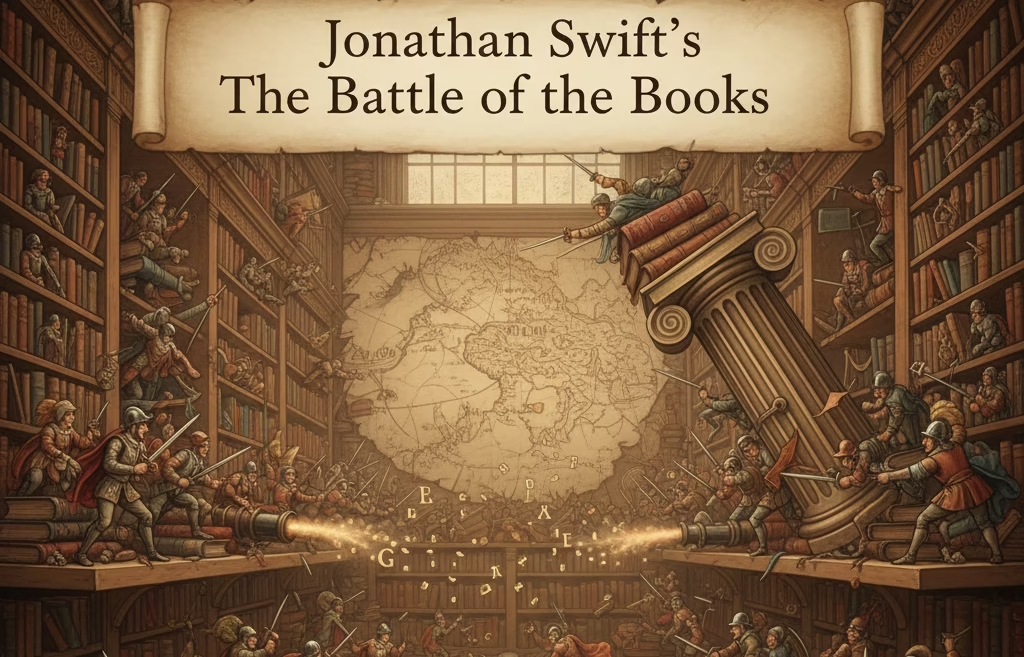Introduction
John Osborne’s “Look Back in Anger” is a groundbreaking play that not only transformed British theatre but also offers a rich field for literary analysis. John Osborne’s “Look Back in Anger” is more than a play—it’s a cultural milestone that redefined British theatre in the 1950s. With its raw portrayal of post-war disillusionment and class conflict, Osborne’s work gave voice to a generation and sparked the “Angry Young Men” movement. This in-depth analysis explores the play’s themes, characters, and continued relevance, offering fresh insights for students, theatre lovers, and anyone interested in the evolution of modern drama.
Look Back in Anger Analysis : Context and Background
When “Look Back in Anger” premiered in 1956, escapist productions and genteel drawing-room comedies dominated British theatre. Osborne’s play shattered these conventions. Drawing from his own experiences and frustrations, Osborne introduced audiences to Jimmy Porter—a character whose anger and vulnerability reflected the mood of post-war Britain. The play’s realistic setting, colloquial language, and focus on working-class life marked a radical departure from tradition.
The “Angry Young Men” Movement
Osborne’s work was at the forefront of the “Angry Young Men,” a group of writers and playwrights who rejected the status quo and exposed the struggles of ordinary people. Their works gave voice to societal frustrations, challenging the complacency of the upper classes and the rigidity of British social structures.
Look Back in Anger Analysis : Plot and Structure
Plot Overview
The play centres on Jimmy Porter, an intelligent but disillusioned young man of working-class origin, and his upper-middle-class wife, Alison. Their marriage is fraught with tension, exacerbated by class differences and Jimmy’s constant railing against society. The arrival of Alison’s friend Helena further complicates the dynamics, leading to betrayal, heartbreak, and eventual reconciliation. READ FURTHER
Setting and Style
Set in a modest attic flat in the English Midlands, the play uses “kitchen-sink realism” to depict the everyday struggles of its characters. The presence of simple furniture, scattered newspapers, and domestic routines underscores the monotony and frustration of Jimmy’s life. Osborne’s use of everyday language and unfiltered emotion was groundbreaking, making the play relatable and immediate for audiences.
Look Back in Anger Analysis : Themes
Class Conflict and Social Mobility
At its core, “Look Back in Anger” is a study of class conflict. Jimmy’s resentment towards the upper classes—and even his own wife—reflects a broader sense of disillusionment in post-war Britain. The play explores how social barriers stifle ambition and breed frustration. Thus, making it a powerful commentary on the limitations of the British class system.
The Search for Identity
Jimmy Porter’s struggle is not just with society but with himself. His anger is a response to a lack of purpose and a sense of alienation. This existential crisis is mirrored in other characters, particularly Alison, who feels trapped by societal expectations and her own emotional turmoil.
Gender Roles and Relationships
The play also examines gender dynamics, highlighting the constraints placed on women in the 1950s. Alison’s passive suffering and Helena’s assertiveness provide contrasting models of femininity, while Jimmy’s aggression exposes the fragility of traditional masculinity.
Emotional Realism
Osborne’s characters are deeply flawed, their emotions raw and unfiltered. The play delves into themes of love, jealousy, betrayal, and reconciliation, offering a psychological depth that was rare in contemporary theatre. FOR FURTHER ANALYSIS
Look Back in Anger Analysis : Characters
Jimmy Porter
Jimmy Porter is the central figure of the play—a young, highly intelligent man from a working-class background who is consumed by frustration and anger. His sharp wit and eloquence are matched only by his deep sense of dissatisfaction with the world around him. Jimmy’s anger stems from his perception of social injustice, class barriers, and the emotional stagnation he sees in those closest to him. He is passionate, restless, and often cruel, especially toward his wife Alison, yet his vulnerability and yearning for meaning make him a deeply complex and tragic character. Jimmy’s tirades are both a critique of post-war British society and a personal cry for connection and understanding.
Alison Porter
Alison, Jimmy’s wife, comes from an upper-middle-class family and embodies emotional restraint and quiet suffering. She is gentle, introspective, and often passive, enduring Jimmy’s verbal assaults with stoicism. Alison’s internal conflict revolves around her loyalty to Jimmy and her need for self-preservation. Her journey through the play is one of gradual self-realisation. She struggles to reconcile her love for Jimmy with the pain he causes her. Thus, she ultimately seeks independence before returning with a deeper understanding of herself and their relationship. Alison represents the silent endurance of many women of her era, caught between tradition and the desire for autonomy.
Cliff Lewis
Cliff Lewis is the couple’s Welsh lodger and Jimmy’s close friend. Warm, good-natured, and unassuming, Cliff acts as a stabilising presence in the household. He often mediates between Jimmy and Alison, offering comfort and humor in tense situations. Cliff’s affection for both Jimmy and Alison is genuine, and his easygoing nature provides a stark contrast to Jimmy’s volatility. Despite his secondary role, Cliff’s empathy and loyalty highlight the importance of compassion and friendship amid emotional turmoil.
Helena Charles
Helena Charles, Alison’s friend, is strong-willed, assertive, and principled. She enters the Porters’ lives as a visitor but soon becomes a catalyst for change. Disapproving of Jimmy’s treatment of Alison, Helena initially seeks to rescue her friend, but her own involvement with Jimmy complicates matters. Helena’s affair with Jimmy and her eventual decision to leave him underscore her moral conviction and the complexity of her character. She represents a more modern, assertive woman, challenging traditional gender roles and expectations.
Colonel Redfern
Colonel Redfern, Alison’s father, symbolises the values and attitudes of the older generation. A retired military officer, he is dignified, reserved, and somewhat bewildered by the emotional intensity and social changes embodied by Jimmy and Alison. Also, Colonel Redfern’s presence in the play highlights the generational divide and the fading influence of traditional authority. His interactions with Jimmy and Alison reveal both his affection for his daughter and his inability to fully understand the new world emerging around him.
Each character in Look Back in Anger is carefully crafted to reflect the social tensions, emotional struggles, and shifting values of post-war Britain. Their interactions and individual journeys provide a rich tapestry of human experience. Thus making the play a timeless exploration of love, anger, and the search for meaning.
Look Back in Anger Analysis : Symbolism and Style
Osborne employs powerful symbols throughout the play. The newspapers scattered in the flat represent Jimmy’s quest for knowledge and his desire to transcend his circumstances. Alison’s repetitive act of ironing and later Helena symbolises the monotony and frustration of domestic life, as well as the unchanging nature of Jimmy’s existence.
The language of the play is another key element. Osborne’s use of slang, sarcasm, and biting wit gives the dialogue a sense of immediacy and authenticity. The play’s structure—three acts unfolding over a short period—heightens the emotional intensity and keeps the audience engaged.
Look Back in Anger Analysis : Legacy
Impact on British Theatre
“Look Back in Anger” is widely credited with transforming British theatre. Its success paved the way for a new generation of playwrights who tackled social issues with honesty and urgency. The play’s influence can be seen in the works of Harold Pinter, Alan Sillitoe, and Shelagh Delaney, among others.
Cultural Resonance
The themes of alienation, class struggle, and the search for meaning remain relevant today. The play’s portrayal of disaffected youth and fractured relationships continues to resonate with audiences, making it a staple of literature curriculums and theatre repertoires worldwide.
Adaptations and Revivals
“Look Back in Anger” has been adapted into film and television multiple times, most notably in the 1959 movie starring Richard Burton. The play is regularly revived on stage, with each production offering new interpretations and insights into its complex characters and themes.
Conclusion
John Osborne’s Look Back in Anger is not merely a play—it is a mirror held up to the anxieties, frustrations, and hopes of post-war Britain, and by extension, to any society grappling with rapid change and disillusionment. Through the character of Jimmy Porter, Osborne channels the raw, unfiltered voice of a generation that felt alienated by the promises of the past and uncertain about the future. Jimmy’s anger is not just personal; it is emblematic of a broader societal malaise. Moreover, it is a cry against stagnation, complacency, and the rigid boundaries of class and tradition.
The enduring power of Look Back in Anger lies in its relentless emotional honesty. Osborne does not offer easy answers or tidy resolutions. Instead, he compels audiences and readers to confront uncomfortable truths about love, identity, and the human condition. Moreover, the play’s domestic setting becomes a battleground for existential questions, making the ordinary extraordinary and the personal political. Alison’s quiet suffering, Cliff’s gentle loyalty, and Helena’s assertiveness all serve to highlight the complexity of human relationships and the difficulty of genuine communication.
Ultimately, Look Back in Anger endures not just as a historical artifact, but as a living, breathing work of art. Its influence on theatre and literature is profound, but its greatest legacy may be its ability to provoke reflection and dialogue. Osborne’s masterpiece asks us not only to look back in anger, but also to look forward with honesty and courage.
Frequently Asked Questions
What is the main message of “Look Back in Anger”?
The play explores the frustrations of post-war youth, the limitations of the class system, and the complexities of human relationships. It urges audiences to confront uncomfortable truths about society and themselves.
Who are the key characters in the play?
The main characters are Jimmy Porter, Alison Porter, Cliff Lewis, Helena Charles, and Colonel Redfern. Each represents different facets of British society and human experience.
Why is “Look Back in Anger” considered revolutionary?
The play broke new ground with its realistic portrayal of working-class life, its use of everyday language, and its willingness to tackle taboo subjects. It marked a turning point in British theatre, inspiring future generations of writers and performers.






1 Comment
[…] EXPLORE MORE AUTHORS […]